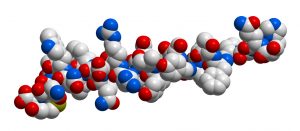Tamoxifen Citrate is a selective estrogen receptor modulator (SERM). Tamoxifen citrate is currently undergoing research and experimentation to see what it can teach researchers about the body of animal test subjects.This research liquid has shown a great deal when it comes to experimentation due to its long half-life and ability to be used in many different types of experiments. Studies have shown the ability to inhibit some reactions within the body of the test subject, while being quickly absorbed and able to be used for days on end before the reactions slow down. It is helping teach researchers new things on a regular basis and has given them the potential to learn much more in the future.
What is Tamoxifen Citrate?
Tamoxifen citrate is a specially designed research liquid that has shown the ability to reduce the risk of specific types of cancer in animal test subjects, due to the antiestrogenic effects that may be related to its ability to compete with estrogen for binding sites in target tissues such as breast. While studies have not always shown to reduce the risk of developing cancer, it has shown researchers that some types of animal test subjects cancers do react positively when exposed to Tamoxifen citrate.
How Does It React Within Experimental Settings?
Tamoxifen citrate reacts very steadily when used during most experiments due to the fact that it is often absorbed into the tissues of the test subject within just a few hours, 4-6 hours, and it has a half-life of 5-6 days on the low end. Higher dosages used for experimentation have shown that it does not fully leave the test subject's body for as many as 14 days. It has shown an increase in helping to keep specific types of cancer, such as breast cancer that is situated within the milk ducts of the test subject, from spreading to other areas within the body.
What Has Tamoxifen Citrate Taught Researchers?
So far, Tamoxifen citrate has taught researchers that there are ways that the body of a test subject can protect itself when cancer tries to invade. This is not the case with all types of cancer, but it has shown promise when trying to figure out how the test subject's body reacts when cancer begins and how it tries to fight. The more research that is done on this research liquid and different types of cancer, the more researchers will learn about the steps that cancer takes when trying to invade each type of tissue.
What Risks Are Associated with Tamoxifen Citrate?
While only some researchers have noticed an increased risk potential with some medical issues during their experiments, they are worth noting. At certain times, some research has shown that test subjects are showing more signs of the following:
- Blood clots within the legs
- Development of reproductive forms of cancer, particularly in female test subjects
- Visible changes within the retina, causing difficulty seeing
- Disturbances within the normal blood counts of the test subjects, particularly platelet levels



